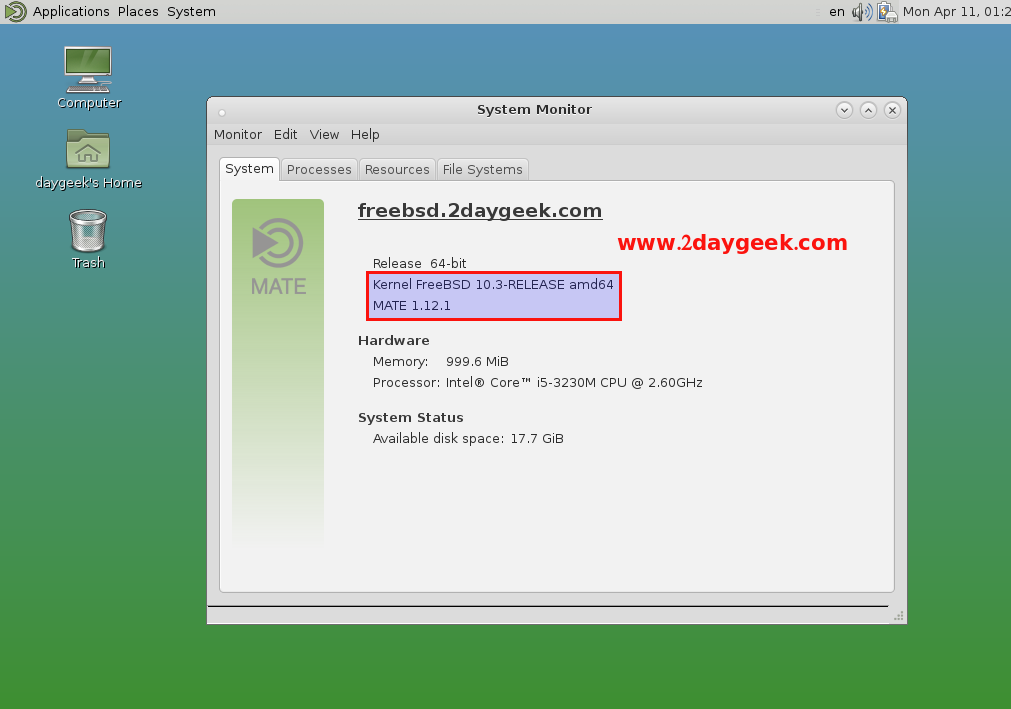
How To Install Smokeping On Freebsd Install Kde
How-To: Install KDE, MATE, or GNOME on FreeBSD 10.2 & 11 by Cao Feb 26, 2016 GNOME, KDE, MATE, Tutorial 0 comments Thanks to these users for the various guides on setting up different desktop environments on FreeBSD. Tracking network latency on FreeBSD with SmokePing. All you need is a FreeBSD 11 server with a root user and Apache. Sudo pkg install smokeping.
5.7.1. GNOME GNOME is a user-friendly desktop environment. It includes a panel for starting applications and displaying status, a desktop, a set of tools and applications, and a set of conventions that make it easy for applications to cooperate and be consistent with each other.
More information regarding GNOME on FreeBSD can be found. That web site contains additional documentation about installing, configuring, and managing GNOME on FreeBSD. This desktop environment can be installed from a package: # pkg install gnome3 To instead build GNOME from ports, use the following command.
GNOME is a large application and will take some time to compile, even on a fast computer. # cd /usr/ports/x11/gnome3 # make install clean GNOME requires /proc to be mounted. Add this line to /etc/fstab to mount this file system automatically during system startup: proc /proc procfs rw 0 0 GNOME uses D-Bus and HAL for a message bus and hardware abstraction.
These applications are automatically installed as dependencies of GNOME. Enable them in /etc/rc.conf so they will be started when the system boots: dbus_enable='YES' hald_enable='YES' After installation, configure Xorg to start GNOME. The easiest way to do this is to enable the GNOME Display Manager, GDM, which is installed as part of the GNOME package or port. It can be enabled by adding this line to /etc/rc.conf: gdm_enable='YES' It is often desirable to also start all GNOME services. To achieve this, add a second line to /etc/rc.conf: gnome_enable='YES' GDM will start automatically when the system boots. A second method for starting GNOME is to type startx from the command-line after configuring ~/.xinitrc.
Sims 3 java mobile9 touch. We offer municipalities cost-efficient, environmentally sound recycling programs. WM Recycle America provides manufacturers with the secure, consistent stream of high-quality raw materials they need to maintain operational efficiency. Our vision is a reinvigorated recycling industry which offers communities and businesses more effective and affordable recycling program options.
If this file already exists, replace the line that starts the current window manager with one that starts /usr/local/bin/gnome-session. If this file does not exist, create it with this command:% echo 'exec /usr/local/bin/gnome-session' > ~/.xinitrc A third method is to use XDM as the display manager. In this case, create an executable ~/.xsession:% echo 'exec /usr/local/bin/gnome-session' >Pdf panduan bermain saham pdfescape. ~/.xsession. 5.7.2. KDE KDE is another easy-to-use desktop environment. This desktop provides a suite of applications with a consistent look and feel, a standardized menu and toolbars, keybindings, color-schemes, internationalization, and a centralized, dialog-driven desktop configuration. More information on KDE can be found. For FreeBSD-specific information, consult.

To install the KDE package, type: # pkg install x11/kde4 To instead build the KDE port, use the following command. Installing the port will provide a menu for selecting which components to install. KDE is a large application and will take some time to compile, even on a fast computer. # cd /usr/ports/x11/kde4 # make install clean KDE requires /proc to be mounted. Add this line to /etc/fstab to mount this file system automatically during system startup: proc /proc procfs rw 0 0 KDE uses D-Bus and HAL for a message bus and hardware abstraction. These applications are automatically installed as dependencies of KDE. Enable them in /etc/rc.conf so they will be started when the system boots: dbus_enable='YES' hald_enable='YES' The installation of KDE includes the KDE Display Manager, KDM.
To enable this display manager, add this line to /etc/rc.conf: kdm4_enable='YES' A second method for launching KDE is to type startx from the command line. For this to work, the following line is needed in ~/.xinitrc: exec /usr/local/bin/startkde A third method for starting KDE is through XDM. To do so, create an executable ~/.xsession as follows:% echo 'exec /usr/local/bin/startkde' > ~/.xsession Once KDE is started, refer to its built-in help system for more information on how to use its various menus and applications. 5.7.3. Xfce Xfce is a desktop environment based on the GTK+ toolkit used by GNOME. However, it is more lightweight and provides a simple, efficient, easy-to-use desktop. It is fully configurable, has a main panel with menus, applets, and application launchers, provides a file manager and sound manager, and is themeable.